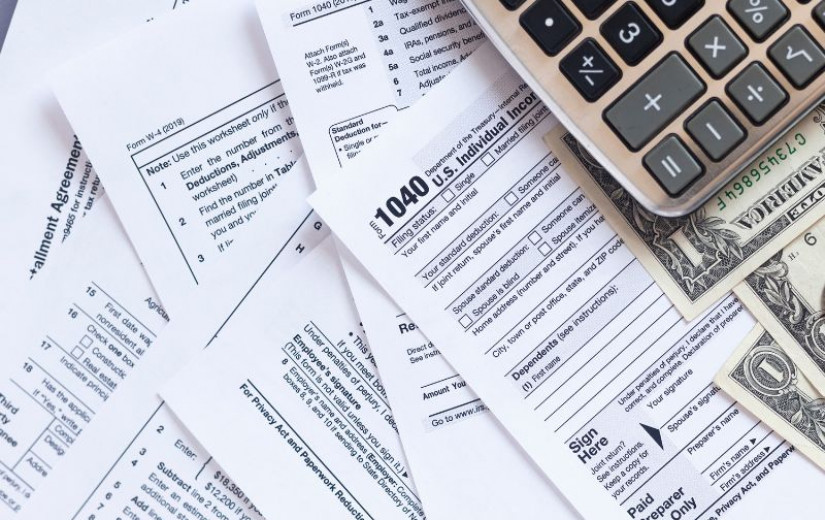

Vermont Blue Advantage will no longer offer any Medicare Advantage plans in the state for 2026.
On October 1, Blue Cross Blue Shield of Vermont announced Vermont Blue Advantage would not continue coverage for the 26,000 people in the state on its individual Medicare Advantage plans for next year. The company is also ending all existing employer-sponsored retiree plans.
Whether the company will return to Vermont’s insurance landscape in the future, “depends on whether market conditions improve, or new opportunities open that would enable Vermont Blue Advantage to offer sustainable and competitive plans,” Andrew Garland, a vice president and spokesperson for the insurer, told VTDigger.
READ MORE
Vermont Blue Advantage has provided Medicare Advantage coverage for the state’s 7,000 retired teachers, but that contract was not renewed for 2026, the Office of the State Treasurer announced in September. The shift was unplanned but necessary after Vermont Blue Advantage proposed a 50% premium increase in July, according to Treasurer Mike Pieciak.
Two other smaller employers also coordinated coverage for their retirees through Vermont Blue Advantage plans, Kaj Samsom, the state’s commissioner of the Department of Financial Regulation, confirmed. Those employers are also losing that option in 2026.
Medicare Advantage plans, also known as Part C plans, are an option to those eligible for Medicare. The plans are run by a private company with federal funding and generally include broader coverage than traditional Medicare, which covers 80% of health expenses and requires a separate plan for prescription drug coverage.
Vermonters who lose coverage when their Medicare Advantage plans end will have the option to enroll in a Medigap private plan to supplement traditional Medicare, the state’s health care advocate Mike Fisher told lawmakers last week.
Blue Cross Blue Shield of Vermont has faced severe solvency issues due to an unanticipated increase in the number and complexity of claims. The nonprofit insurer lost $152 million between 2021 and 2024, according to its reporting to the state. At least 20% came from losses through Vermont Blue Advantage, which Blue Cross and Blue Shield of Vermont runs in conjunction with its counterpart and parent company in Michigan, since sale of the Medicare Advantage plans launched in 2021.
Simultaneously, insurers all across the country have been scaling back their Medicare Advantage coverage as changes in federal regulations have made the plans less profitable for those who run them.
Next year, Vermonters who live in most of the state’s counties who purchase their Medicare plans themselves will have no Medicare Advantage plans available to them. In addition to the end of the Vermont Blue Advantage option, UnitedHealthcare — one of the largest purveyors of Medicare Advantage plans nationwide — announced on October 1 that it also no longer would sell its plans in Vermont. That plan served roughly 7,800 Vermonters, according to United Healthcare.
Now, the only plans available for individuals to purchase are a handful of Humana Advantage plans in Bennington, Caledonia, Essex, Orange, Windham and Windsor counties.
However, employers that provide retiree medical benefits still have other options.
New insurer for Vermont teachers
After the high premium increase proposed by Vermont Blue Advantage, the Vermont Treasurer’s office struck a three-year contract with the insurance company HealthSpring to cover the retired teachers plan. HealthSpring also has been providing coverage to Vermont State College retirees.
The teachers will still experience a 16.2% rate increase on the HealthSpring plan — though it is a far cry from Vermont Blue Advantage’s proposed 50% increase.
“The 50% increase was kind of shocking for me and for everybody that was reviewing this,” Treasurer Pieciak said. In previous years, the premiums increased around 5-10%.
“I think just those two numbers tell the story about the state of healthcare,” he added. “Who would have thought that a 16% increase would be something that you’d be happy with?”
Still, Pieciak says that the shift saves those covered by the plan from paying hundreds of dollars a year in additional premiums, and it saves the state “tens of millions of dollars” required for its portion of the plans. It also would have increased the unfunded pension liability by $215 million, he said.
The treasurer said his office weighed four questions in their decision to shift to HealthSpring: “What were the benefits? What was the network? What was the cost? And then what was the stability of the carrier and the contract?”
The benefits on the HealthSpring plans are the same or stronger, as those on Vermont Blue Advantage, Pieciak said.
Pieciak is optimistic that the shift to HealthSpring will offer some stability for the plans in the state. “The scale that [HealthSpring is] able to bring to the challenge that we’re facing here in Vermont on health care affordability is beyond anything that we can do on our own,” he said. “Maybe it’s better, in this particular area of insurance, to have a more experienced, much larger player.”
Unexpected benefit
Patient advocates note one there are some upsides for current Medicare Advantage policyholders losing coverage if they want to shift to traditional Medicare.
“This is not an all good or an all bad situation,” the state’s health care advocate Mike Fisher said at a legislative committee meeting at the Statehouse Thursday. “I know there are those that are celebrating it because they hate Medicare Part C.”
If individuals themselves choose to leave Medicare Advantage, for traditional Medicare, they may face obstacles getting a supplemental commercial plan, called Medigap, which can cover the remainder of expenses that traditional Medicare does not. Federal law allows those insurers to either deny coverage entirely or charge higher premiums based on pre-existing health conditions.
However, if people lose their coverage due to the plan no longer being offered, they are protected from those increased costs by federal and state regulations.
But Fisher cautioned during the meeting that many Medigap plans in Vermont are prohibitively expensive, even with those protections.
“My big fear is that with the loss of the [Medicare Advantage] market, we are going to really drive up the number of Vermonters with no secondary coverage. Predictably, many of them will have costs they can’t pay for,” he told the committee.
The annual open enrollment period for individuals to choose Medicare plans for the coming year begins Oct. 15 and runs through Dec. 7, but those losing their coverage have a special enrollment period through Feb. 28, 2026 — though waiting until the new year to enroll may cause a gap in coverage as the plans close out at the end of 2025.
Vermont Blue Advantage has guidance for patients navigating the change of coverage.
The State Health Insurance Program (SHIP) is also prepared to help Medicare beneficiaries navigate their coverage and is gearing up for a surge in demand as thousands of Vermonters need to pivot in their Medicare plans. The Medicare handbook, Medicare.gov and 1-800-Medicare also remain resources for individuals to find new plans — and are functioning even as the federal government shutdown enters its second week.









